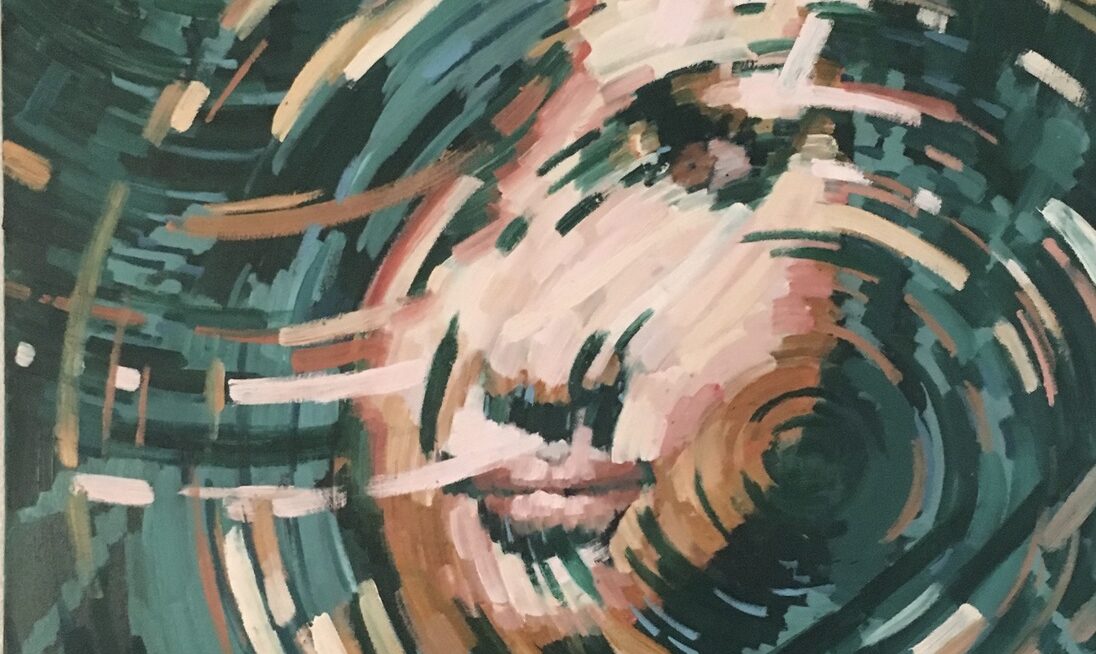
20 Jul Passion and Purpose in Painting the Human Condition: Eric L. Jones
Local painter and art instructor, Eric L. Jones has been a fixture in the Orange County art scene for more than decade. His work blends a new kind of Abstract Expressionism with spirituality, poetic reflection, and Deconstructivism. He has shown his work in galleries in Fullerton, Costa Mesa, Huntington Beach, and Santa Ana, and actively shares his talents and passions with many different college populations in OC.
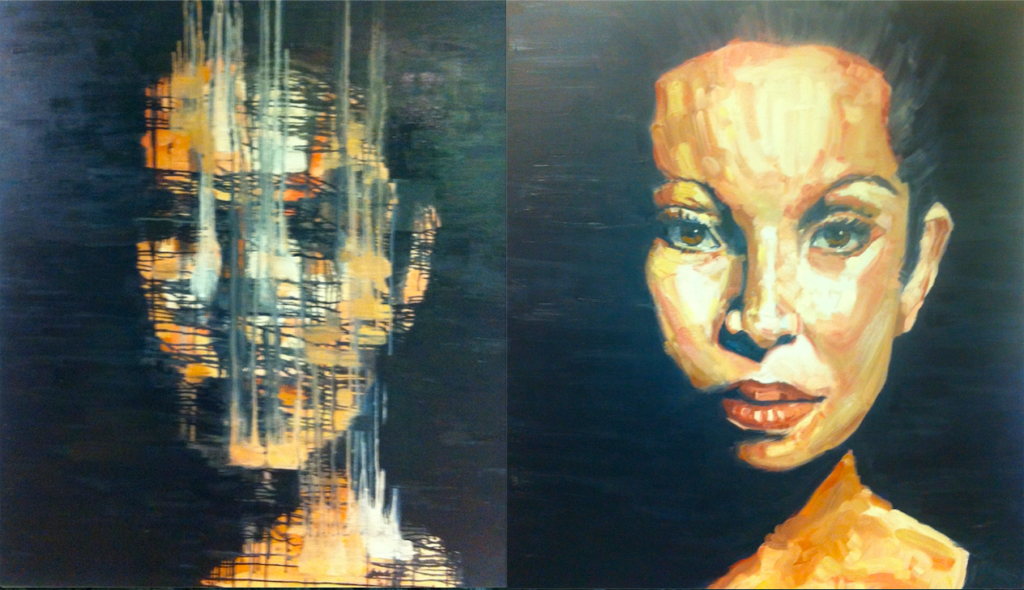
Jones’ art practice reaches far and wide, touching every soul his work comes into contact with. Almost as a kind of art therapy, Jones’ work offers insight into our human condition and what it takes to see past the noise of our society to what really matters. “My goals used to be about selling first,” Jones said. “Now, it’s about sharing, and selling second. I want to share my experiences and my process of healing from depression and the process of painting. I share live paintings on social media and often speak about my spiritual and painting processes to different groups.”
“When we look at people who are successful we don’t see what it took to get there.”

Growing up in a Valdosta, Georgia, his family encouraged and supported his early artistic inclinations, helping him to explore the many different types of artistic production available. “They didn’t speak much, but I would come home from school and they bought me art supplies,” Jones recalled. “My dad brought home computer paper. The kind with the holes on each side. At the time, I didn’t know paper was made without lines on it. I only knew about notebook paper.”
He fell in love with comic books at an early age, studying the artistry of graphic art legends and copying what he saw on the pages of these inspiring stories. “When I was 10, I bought my first comic book,” he said. “X-Factor was the title, #20. I was hooked and I started to draw what I saw on the pages of the comic books I bought. I also made up my own comic book characters and comics.”
Growing up, Jones honed his skills and passion into a true purpose. In college at Valdosta State University, he thought becoming a business major would be a lucrative focus, but couldn’t stand the classes, so he decided to follow his artistic calling through a formal education and majored in art, with an additional love for acting. He moved to California to follow his love for acting and worked as a professional actor for some time until he started graduate school for fine art at California State University, Fullerton (CSUF).
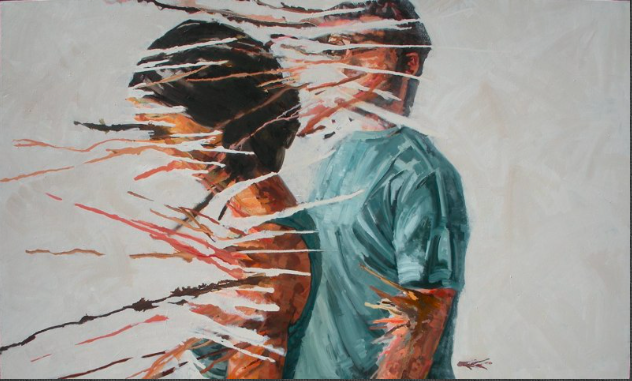
Since finishing his MFA at CSUF, Jones has taught art at Irvine Valley College, Fashion Institute of Design and Merchandising, and Golden West College, among other schools, and has shown his work in dozens of galleries. He refers to his current style of painting as Oblit-style figurative art. While he focuses on figurative and portraiture, he says that his paintings mirror the struggles and beauty of life and of God’s grace. “My work is about obliterating my ideas of what beauty is at the same time obliterating my ideas of the beauty of God,” Jones explains. “My paintings and my spiritual life mirror. I learn about who I am while painting and I am learning about painting as I paint. The struggle of the process of painting and the struggle of life are continually in a cycle.”
“The beauty that I speak of is the beauty of being human. Being a human, I am prone to be flawed. Yet at the same time, I know God desires perfection. But that perfection that is desired is completed through Jesus. So, the beauty in being flawed is at the forefront. For example, how can one know grace until they experience it, whether they give it or receive it? In my work, I paint the portrait then distort the image. There is beauty in the purposeful flaws. The way the paint mixes together or how parts of the face are smeared out.”
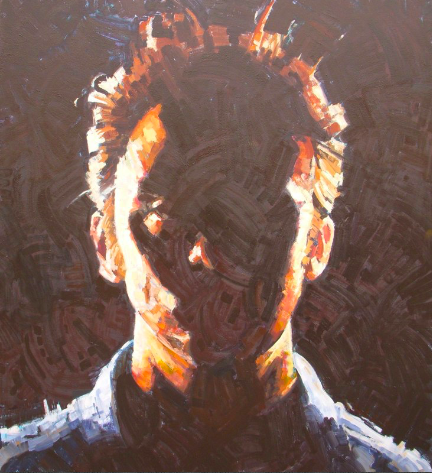
Jones’ painting practice is more than just an exploration into the visual expression of humankind. He paints to share, to serve, and to reflect. A proud Christian man, Jones finds God in his art and uses his gifts in expression to not only communicate with his higher power but also to communicate with his inner self. “My Christianity is very important to my practice. Painting is a form of worship,” Jones said. “There’s a lot of prayer and meditation when I paint. I feel God speaks to me about my life in the moment. My struggles in life are worked through my struggles in my paintings, and God is helping me through them the entire time.”
“For example, I went back to a painting, ‘What Matters,’ that I hit a wall with. I struggled with this painting and I was disappointed with it. It sat for five months collecting dust. I went back to work on it. At the time I had not painted for about seven months. As I reworked the piece, I still felt disappointed. The process of reworking was emotionally rough. I even thought I couldn’t paint anymore—yes, I was that dramatic. In the end, I was very satisfied with the piece. What I learned was: 1) Don’t give up, keep going; and, 2) When we look at people who are successful we don’t see what it took to get there. My piece had so much texture from my previous attempts that when you got close it looked like thick, gross, messiness. But from afar it looked like this beautiful woman.”
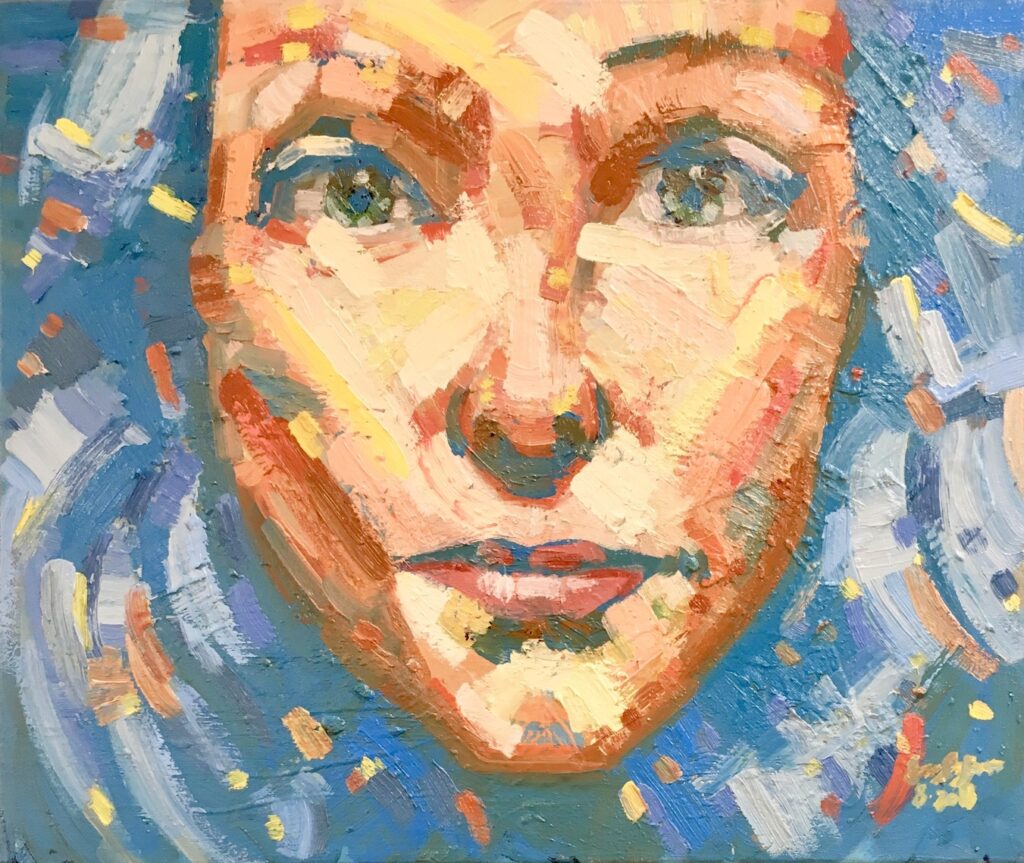
Although being a professional black artist in Orange County is not an easy feat, Jones is upbeat, positive, and involved in nearly every community in this area, teaching, showing, and sharing, but the constant struggle of the black artist in the mostly conservative white OC wears on him. “I am a minority in the OC art scene,” Jones said. “It’s hard being black artist. It’s hard to become a black artist and hard to stay a black artist. It’s hard to think outside of reality when there’s a part of your brain that has to be on survival mode.”
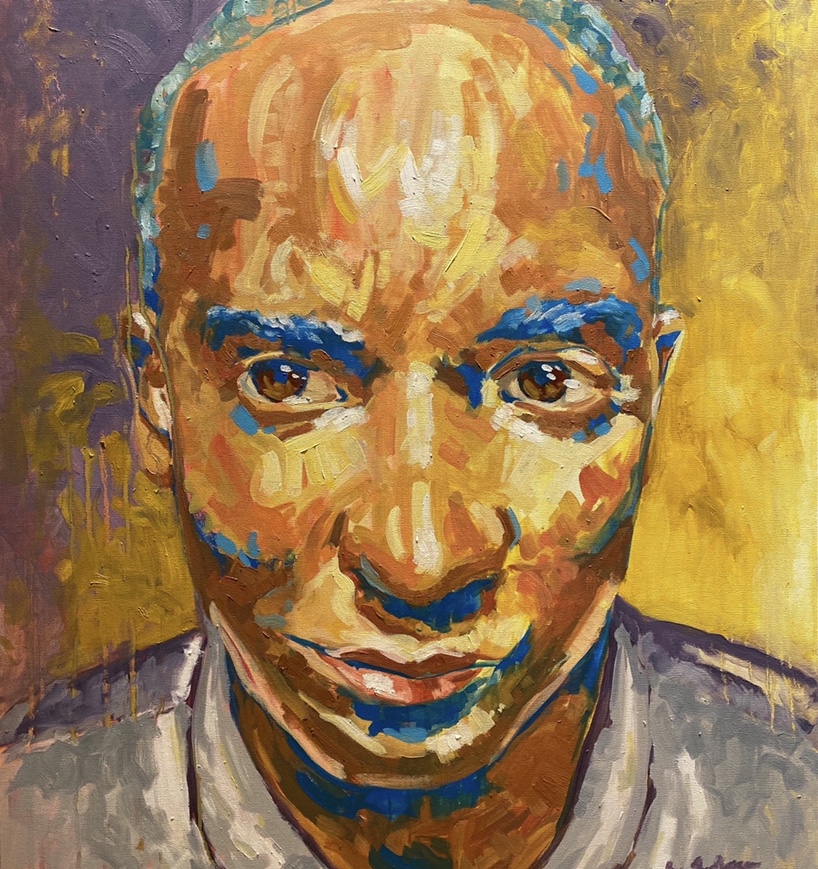
“It’s hard to become a black artist and hard to stay a black artist.”
The ever-present struggle for black Americans is weighing on everyone’s minds and hearts now during this revolution, but like other black men, Jones tells us that this is not new to him, or to any person of color—that the stereotyping and racial biases against black people are real and everywhere, and although the art community is a melting pot and supportive of all cultures, the majority of white Americans are not.
“I have to think about what wear to not look suspicious. When I am in a store, I have to remember not stick my hands in pocket, if I buy something without a bag I have to make sure I have the receipt. If I go to a gated community make sure I don’t follow someone in. Just wait until the gate closes and type in the code. The same if I need a keycard to get into a building. I bought a new car in 2002. I got tinted windows so I wouldn’t get pulled over for driving a car that looked expensive. I wear bright colors when I run in the neighborhood so I don’t look ‘suspicious.’ Even with all that effort, I have had police called or threatened to be called seven different times from 19-43 years of age. It’s the equivalent to poor students. Most poor students don’t do well in school, not because of intelligence because they are hungry and tired. It is hard to concentrate in an algebra class if you haven’t eaten in 24 hours. Part of your brain is focused on survival and how hungry you are. It is possible to get past it and push through it, but every black person in America has to get past it and push through it.”
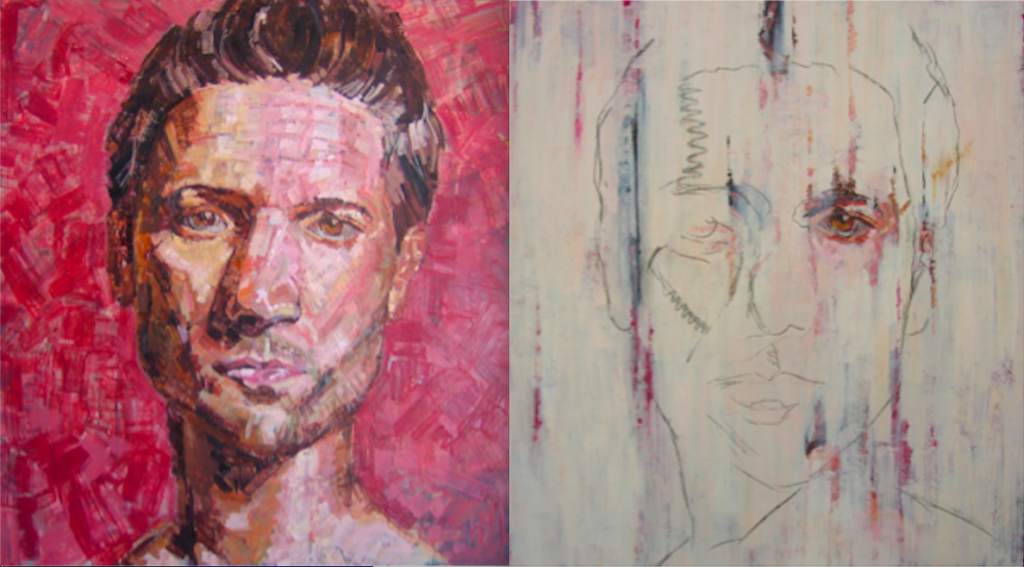
Jones teaches a wide range of student bodies in Orange County, some private schools, some public schools, some community students, some degree-track students. Knowing the dominance of white male art in history and in leading contemporary art galleries and museums, Jones makes sure that he does his part to dismantle the white patriarchy as best he can—“Exposure, elevation, and exposure,” he said. “The people who are in charge tell us who is good, who we should look at, who is important. White males were in charge of the western world [historically] so there is going to be an unconscious bias (or a conscious bias) of who to elevate as important. This unconscious bias has even infiltrated my own mindset.”
“…there needs to be a conscious decision to elevate women artists and minority artists in class rooms, art publications, art shows, etc.”
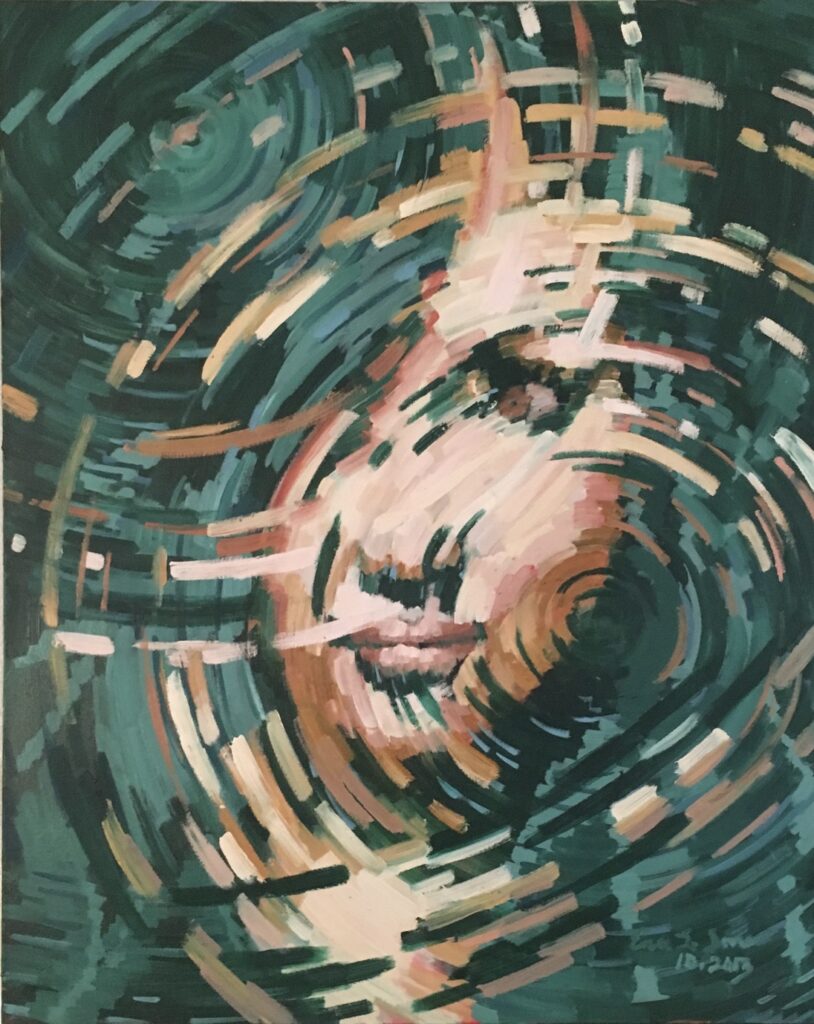
“My solution is to expose my students to women artists and artists from different cultures in the classes I teach. But first, for me, is to get rid of or obliterate the idea that the greatest artists are the only ones that were exposed to me in my studies. There’s no way in the history of the world that only white male artists had great paintings or were the only great artists. I think because of this unconscious bias there needs to be a conscious decision to elevate women artists and minority artists in class rooms, art publications, art shows, etc. We can and should acknowledge artists’ race or gender because it is part of who they are and it informs their work, but I think also, women artists and minority artists should not prefaced with being a woman or a minority—not in the sense that we don’t acknowledge that’s who they are, but let their work be at the forefront instead of their race or gender.”
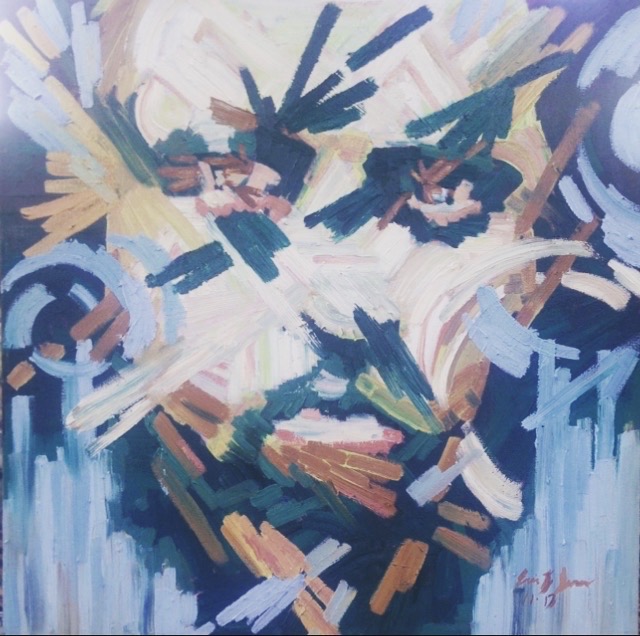



Sorry, the comment form is closed at this time.